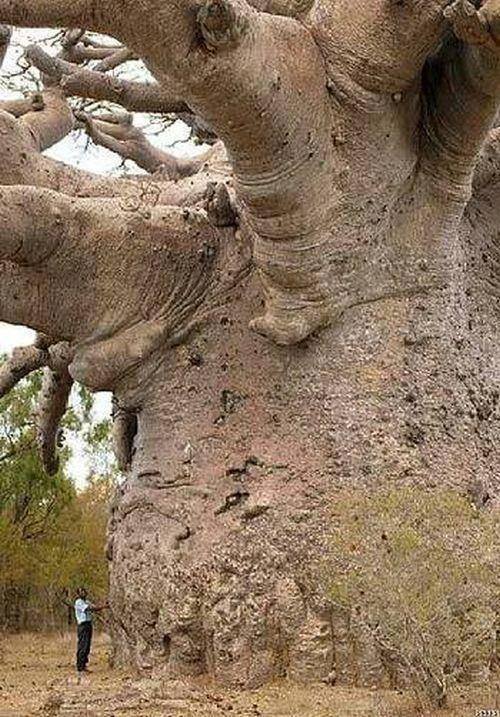The bark of the African baobab tree can be used to treat fever and combined with another plant was used toprotect against malaria. Leaves and roots are used for medicinal purposes, primarily gastric and chest complaints.
The Baobab is also to be considered an aid to fertility. Infertile women place their hands on the tree and promise to either offer sacrifice, or the naming of their child after the tree in return for fertility.
Carbon dating has found living baobab trees that are over 6,000 years old, which is older than the Great Pyramid and Sphinx. Want some more perspective? When some of the baobabs in Senegal were just reaching maturity, our ancestors were still using stone tools. And a number of the baobabs that European explorers came upon in the 1400s were already millennia old.
And they are big. The enormous size of some of the baobab trees has led to them being used as kind of makeshift buildings. The hollow trunks of large baobab trees have been used as houses, prisons, and even a pub.

